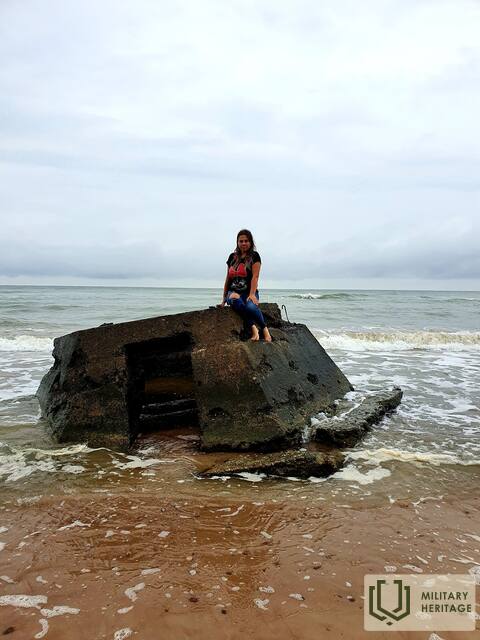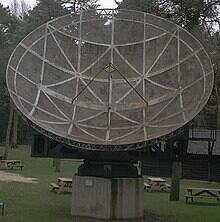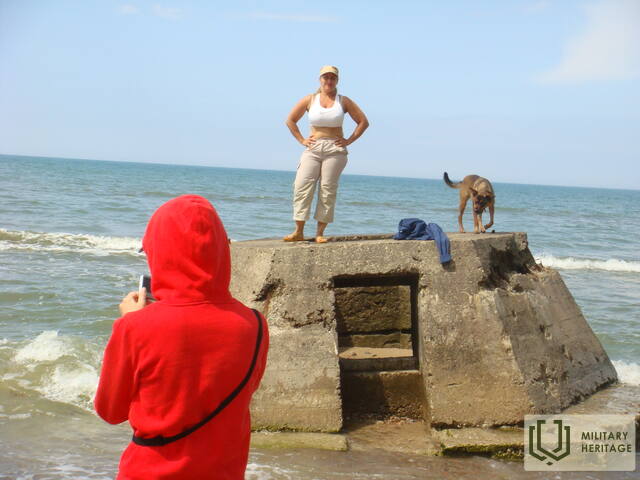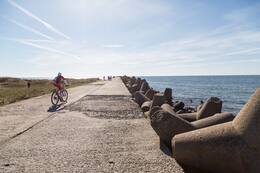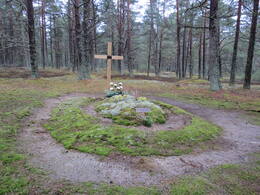Vokiečių kariuomenės radiolokacinis postas Jūrkalnėje
Siekdamos apsaugoti Kuržemės pakrantę nuo galimo sovietų ar net Vakarų sąjungininkų puolimo, Vokietijos ginkluotosios pajėgos keliose vietose dislokavo radiolokacines stotis, kurios leido daug anksčiau nustatyti priešo oro veiklą. Vienas jų įrengtas ties Jūrkalne
Kai 1944 metų spalį Raudonoji armija su dalimi nacistinės Vokietijos ginkluotųjų pajėgų apsupo Kuržemės pusiasalį, Baltijos jūroje prasidėjo beveik 8 mėnesius trukęs mūšis dėl kariuomenės grupės Kuržemės aprūpinimo, o vėliau ir dėl evakuacijos iš Kuržemės. Mūšiuose virš jūros aviacija vaidino ypač svarbų vaidmenį. Todėl, siekdamos pagerinti Vokietijos karinio jūrų laivyno galimybes kovoti su sovietų lėktuvais ir apsaugoti Kuržemės pakrantę nuo galimo sovietų ar net Vakarų sąjungininkų puolimo, Vokietijos ginkluotosios pajėgos keliose vietose dislokavo radiolokacines stotis, kurios leido daug anksčiau identifikuoti priešo aviacijos veiklą.
Ulmalėje ir Jūrmalnėje greičiausiai buvo dislokuotos vokiškos radarų sistemos FuMG 65 Wurzburg-Riese. Tai buvo vieni moderniausių ir dažniausiai naudojamų radarų, pagaminta apie 1500 radarų modelių. Jame buvo 7 metrų parabolinė antena, kuri siekė 9 tonas. Radaro nuotolis buvo 70 kilometrų, tai yra šiek tiek mažiau nei pusė atstumo iki Gotlando. Radaras sugebėjo aptikti artėjantį orlaivį, o tai buvo ypač svarbu sutemus. Jo guolis buvo naudojamas oro gynybos spinduliams nukreipti į taikinį, o tai savo ruožtu leido panaudoti priešlėktuvinę artileriją taikiniui sunaikinti.
Šiandien radaro pamatai dėl pakrančių erozijos kasmet išplaunami toliau į jūrą.
Susijusi laiko juosta
Susijusios temos
Susijusios vietos
Šiaurinis molas ir baterija Nr.3 Karostoje
Ilgiausias Latvijoje – Šiaurinis molas – pastatytas XIX amžiaus pabaigoje kaip labai svarbi Liepojos jūrų tvirtovės ir karinio uosto dalis. Prieplaukos ilgis – 1800 metrų, plotis – 7,35 metro.
Šiaurinis molas yra vienas iš pirmųjų imperatoriaus Aleksandro III uosto statinių, pastatytų 1890–1892 metais prieš Karostos kanalo kasimą. Kartu su Šiaurės molu, Pietų molu ir Pietiniu molas sudarė Liepojos forpostą.
Liepojos tvirtovės baterija Nr. 3 buvo įrengta šalia Karostos šiaurinio molo ir buvo planuojama būti didžiausia pagal ginkluotę. Platformos buvo pastatytos keturiems 6 colių (152 mm) 1892 metų modelio Canet sistemos pabūklams, penkiems 1887 metų modelio 11 colių (280 mm) pabūklams ir dviem 57 mm Nordenfeld prieštankiniams pabūklams, taip pat 18 9 colių (229 mm) pabūklų.
Šiandien 3 bateriją labiausiai paveikia vyraujanti pietų-šiaurės jūros srovė, kuri sukuria sūkurinį efektą už Šiaurės molo, dėl kurio išplaunami pabūklo platformos pamatai.
Šiaurinis molas saugo Liepojos uosto teritoriją nuo šiaurės vakarų vėjų. Tai Liepojos gyventojų ir lankytojų mėgstama vieta stebėti saulėlydžius, žvejoti ir stebėti jūrą įvairiomis oro sąlygomis. Ypač įspūdinga per audras.
Prie Šiaurės molo yra daug automobilių stovėjimo aikštelės. Taip pat yra tualetai ir kavinė su unikaliu vaizdu į jūrą.
Lithuanian soldiers' graves in Zaļkalns Forest
The memorial is located near the Pāvilosta beach lookout tower in the dunes. There are signs pointing to the memorial.
At the end of the Second World War, three Lithuanian police battalions, the 5th, 13th and 256th, were also deployed in Latvia, and after guard duty and fighting against Soviet partisans and the Red Army on the Eastern Front, from autumn 1944 they were involved in guarding the Baltic Sea coast in Kurzeme.
In October 1944, all three battalions, consisting of 32 officers and about 900 instructors and soldiers, were subordinated to the German 18th Army's 583rd Rear Guard Unit (Koruck 583). The unit was tasked with guarding the Kurzeme coast from Liepāja to Ventspils. All three Lithuanian battalions were deployed in the vicinity of Pavilosta. In December 1944, the 13th Battalion was transferred to the German 1st Army Corps at the Liepaja Lake.
One of the tasks of the Lithuanian coastguard, besides being ready to fight enemy landings and to report enemy ships, was to prevent Latvian refugee boats from sailing to the island of Gotland, 160 kilometres away, but the Lithuanian coastguard men did not prevent the refugee boats from leaving. However, news of the Lithuanian coastguard helping the Latvian refugees and the Lithuanians themselves preparing to cross the sea to Sweden also reached the Germans.
On 10 January 1945, the soldiers of the 1st Company of the 5th Lithuanian Police Battalion were rounded up. More than a week of interrogation and trial followed, which, as a warning to the others, decided to execute seven of the Lithuanian soldiers and to imprison 11 of their comrades in concentration camps in Germany. The execution of the seven Lithuanian soldiers (Sergeant Macijauski, the company commander; Juozas Sendrjuas, a soldier; Vladas Salickas, a soldier; Ionas Bašinskis, Krasauskas and two unknown others) took place on 21 January 1945 in the Zaļkalns Pines in Pavilosta.
In January 1945, the 5th Battalion was disbanded and the combat-ready soldiers were divided into the two remaining battalions, while the rest were formed into a separate sapper company. At the time of the surrender of Army Group Kurzeme in May 1945, two battalions (13th and 256th) were still in Kurzeme as a sapper company with a total of 900 soldiers who were taken prisoner by the Soviets.




